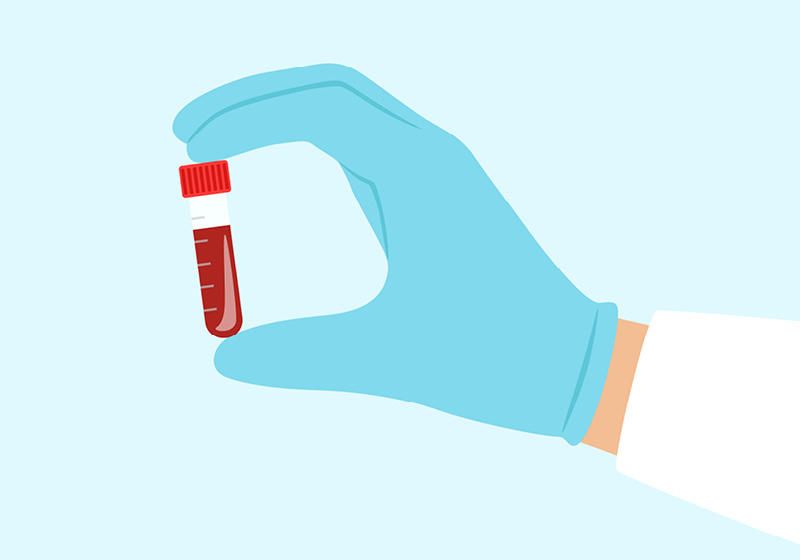The chemokine CXCL12 helps red blood cell progenitors achieve the final steps of maturation.
Donated blood is often in short supply, so to prevent dire blood shortages, scientists are figuring out a way to synthesize blood in the laboratory. However, researchers often face difficulties because they can’t effectively induce enucleation, a crucial process in mammalian red blood cell maturation.
“So far, there is no soluble factor described which is able to trigger this enucleation process,” said Julia Gutjahr, a cell biologist at the University of Konstanz.
Recently, Gutjahr’s team found that CXCL12, a signaling protein, may solve this problem.1 When the researchers exposed mice erythroblasts, or immature red blood cells, to CXCL12, they triggered enucleation. Their findings, reported in Science Signaling, may help advance efforts in making blood in the lab.
“The rate of enucleation limits the production rate [of artificial blood], so anything that leads to a better understanding of how the maturing red [blood] cell might extrude the nucleus is great and to be celebrated,” said Cédric Ghevaert, a hematologist at the University of Cambridge who was not involved in the study.
Antal Rot, a cell biologist at the Queen Mary University of London, and his group studies chemokines, signaling molecules that are best known for their role in promoting cell migration. From left to right: Katharina Artinger, Julia Gutjahr, Elin Hub, Antal Rot, Neil Dufton, Christina Gkantsinikoudi, and Maryna Samus. All but Gkantsinikoudi are coauthors on the study.
Antal Rot
At the time of the study, Gutjahr was a postdoctoral fellow in the laboratory of Antal Rot, an experimental pathologist at the Queen Mary University of London who studies chemokines, which are soluble proteins that are best known for their role in promoting cell migration—one example is CXCL12.
Gutjahr’s team previously discovered that CXCL12 binds to an atypical chemokine receptor (ACKR1).2 However, they observed that even in mice that lacked ACKR1, CXCL12 still bound to erythroblasts. This suggested that CXCL12 likely had another interaction partner.
“Our first guess was CXCR4 because it’s the main receptor for CXCL12,” Gutjahr said. “So, this story was a surprising side discovery from a previous story.”
Signaling by CXCL12 and CXCR4 typically promotes cell migration, but Gutjahr’s team found that this wasn’t the case for mouse erythroblasts. According to Gutjahr and Rot, this likely caused researchers to overlook the pair’s function in erythroblasts. “I think when people look at CXCL12 and CXCR4, the first thing they do is a migration assay, and when the cell doesn’t migrate, they become uninterested,” Gutjahr said.
Gutjahr’s team wanted to know what CXCL12 and CXCR4 were doing in erythroblasts. They added CXCL12 to mouse erythroblasts and found that the cells produced more pyrenocytes, the ejected nuclei that form following erythroblast enucleation. Conversely, when the team reduced CXCR4 expression in erythroblasts, the cells produced fewer pyrenocytes. Together, these findings indicated that both CXCL12 and CXCR4 promote enucleation.

Cédric Ghevaert, a hematologist at the University of Cambridge, studies the synthesis of blood cells in the laboratory. He was not involved in the study.
Cédric Ghevaert
To learn how, the researchers measured the proteins’ expression levels on the surface of mouse erythroblasts using flow cytometry. They found that CXCL12 and CXCR4 expression on the cell surface decreased as the erythroblasts matured. Live-cell tracking microscopy revealed that upon CXCL12 stimulation, both the chemokine and its receptor moved from the cell membrane to the nucleus, where they co-localized with a couple of their downstream effectors. This suggested that CXCL12 and CXCR4 were actively signaling. “It’s the first time that a chemokine receptor is signaling from the nucleus,” Rot said.
Ghevaert added, “The science is solid, the data is strong, and the conclusions are right.”

